'Hard to take' - Kent Women prepare for Tier 2
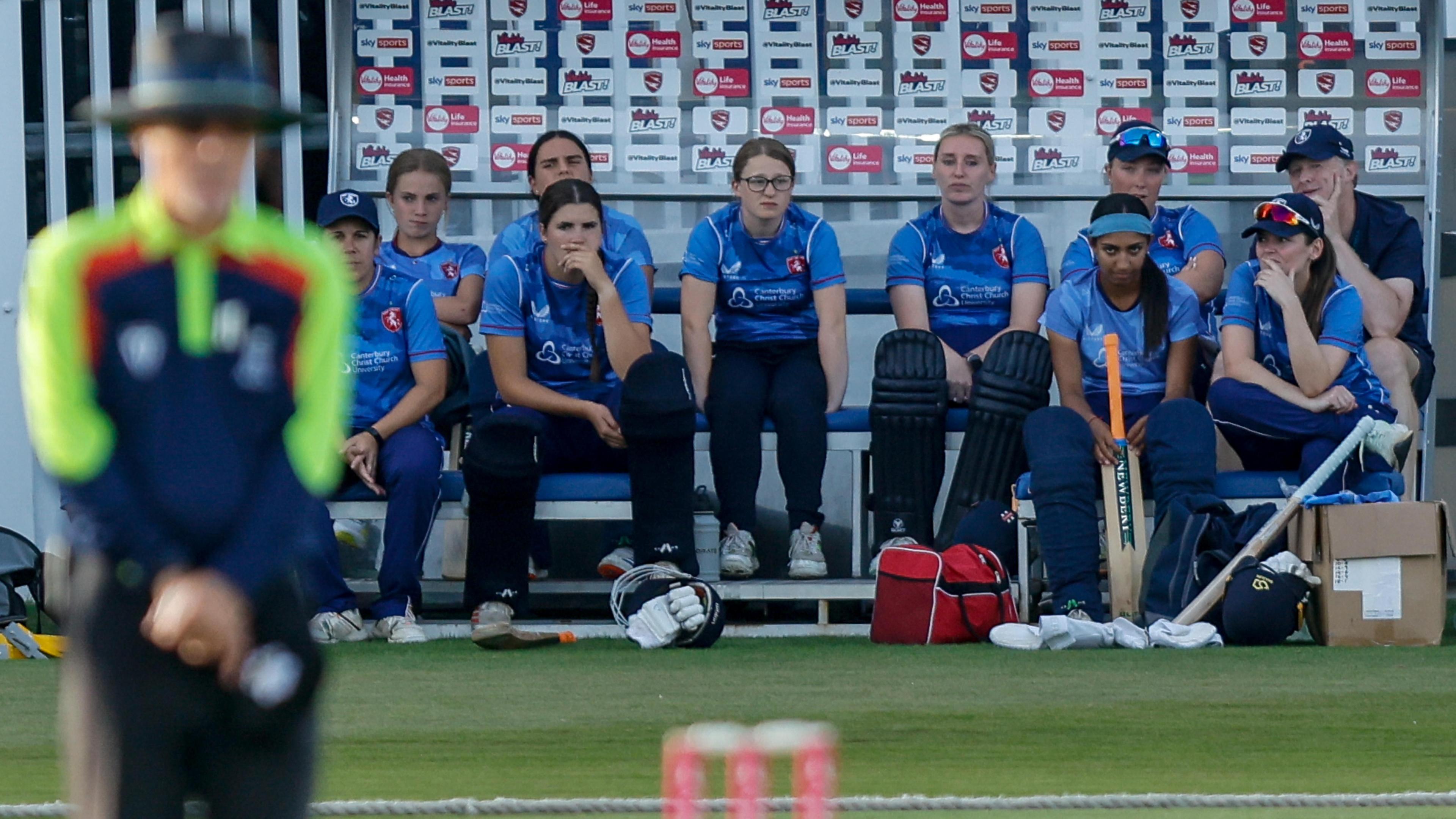
Kent Cricket will play in Tier 2 of the revamped women's league
- Published
When the England and Wales Cricket Board (ECB) announced a massive restructure of women's cricket set to bring unprecedented levels of investment into the game, it seemed like a change that could breathe new life into the county system.
Eight clubs would be given Tier 1 status, meaning professional contracts for every player, but there would be no guarantees for those in the second and third tiers, and as these clubs start to announce their squads, we're now seeing the impact.
Kent Cricket, the most successful side in the history of the women's game with eight County Championship and three T20 titles, missed out on Tier 1 status following a bidding process and they've already seen an exodus of elite players.
England internationals Alice Davidson-Richards and Ryana MacDonald-Gay have joined Surrey, Grace Scrivens has moved to Essex, while Tammy Beaumont is also heading to a Tier 1 team.
Despite their disappointment, Kent say the new structure has given them a future to invest in, and they've vowed to get to the top league at the next opportunity in 2029.
What is changing?
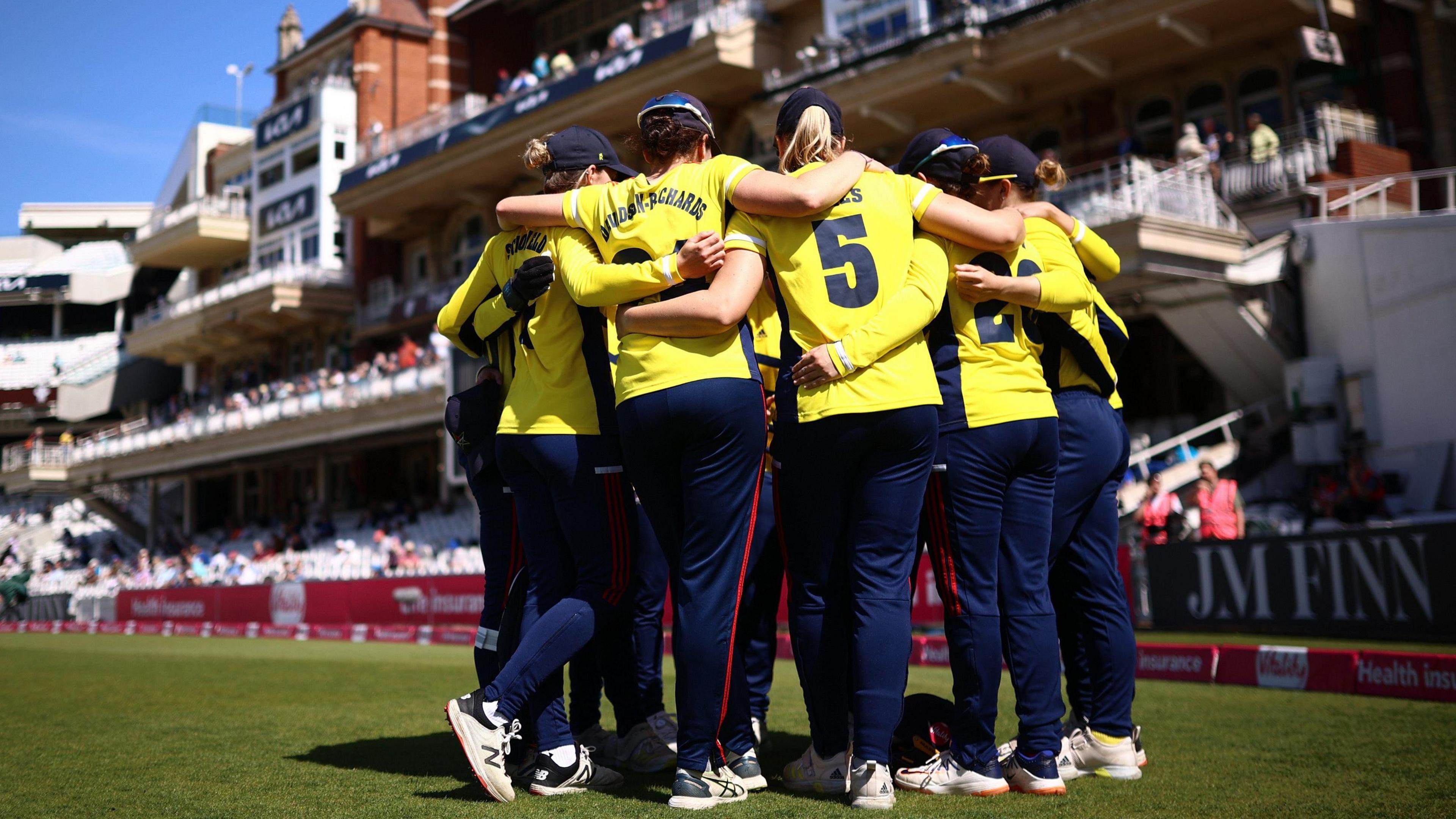
Regional teams like the South East Stars will be replaced by Tier 1 counties next year in a restructure of the women's game
Since 2020, counties have fed into regional teams, which have formed the top tier of women's cricket, playing in the Charlotte Edwards Cup and Rachael Heyhoe Flint Trophy.
Kent and Surrey fed the South East Stars, and the neighbouring Southern Vipers took in players from Sussex and Hampshire.
Next summer it will be replaced by three leagues with individual counties.
The ECB has called it "the next stage in the evolution of women's cricket", external, and says it will invest a further £4m to £5m into the game between 2025 and 2028, taking the total to around £16m.
In April, it announced the eight counties given Tier 1 status were Durham, Essex, Hampshire, Lancashire, Nottinghamshire, Somerset, Surrey and Warwickshire.
Yorkshire said they were "surprised and disappointed" not be be in the top tier, making a case to the ECB, which - a month after the initial announcement - agreed to allow them into Tier 1 from 2026. Glamorgan will be allowed in from 2027.

Alice Davidson-Richards, pictured playing for South East Stars, made her England debut in 2018 after coming up through the Kent pathway but has left the county for Surrey
In July, they announced the Tier 2 clubs: Derbyshire, Glamorgan (until 2027), Gloucestershire, Kent, Leicestershire, Northamptonshire, Middlesex, Sussex, Worcestershire and Yorkshire (until 2026).
While those in the top tier will have a minimum salary of £20,000, the same as new male players, women in Tier 2 will have no such guarantee - most will likely be semi-professional, with pay down to their individual clubs.
There will be no promotion or relegation for the first three seasons, and the top tier will be expanded in 2029 to include two more teams, but the ECB has not yet decided which ones.
Kent's captain Megan Belt has a full-time job as a teacher at Kent College.
With the club confident in their bid, it looked as though she and her team-mates would become professional cricket players next summer.
'Hard to take when we've produced so many England players'
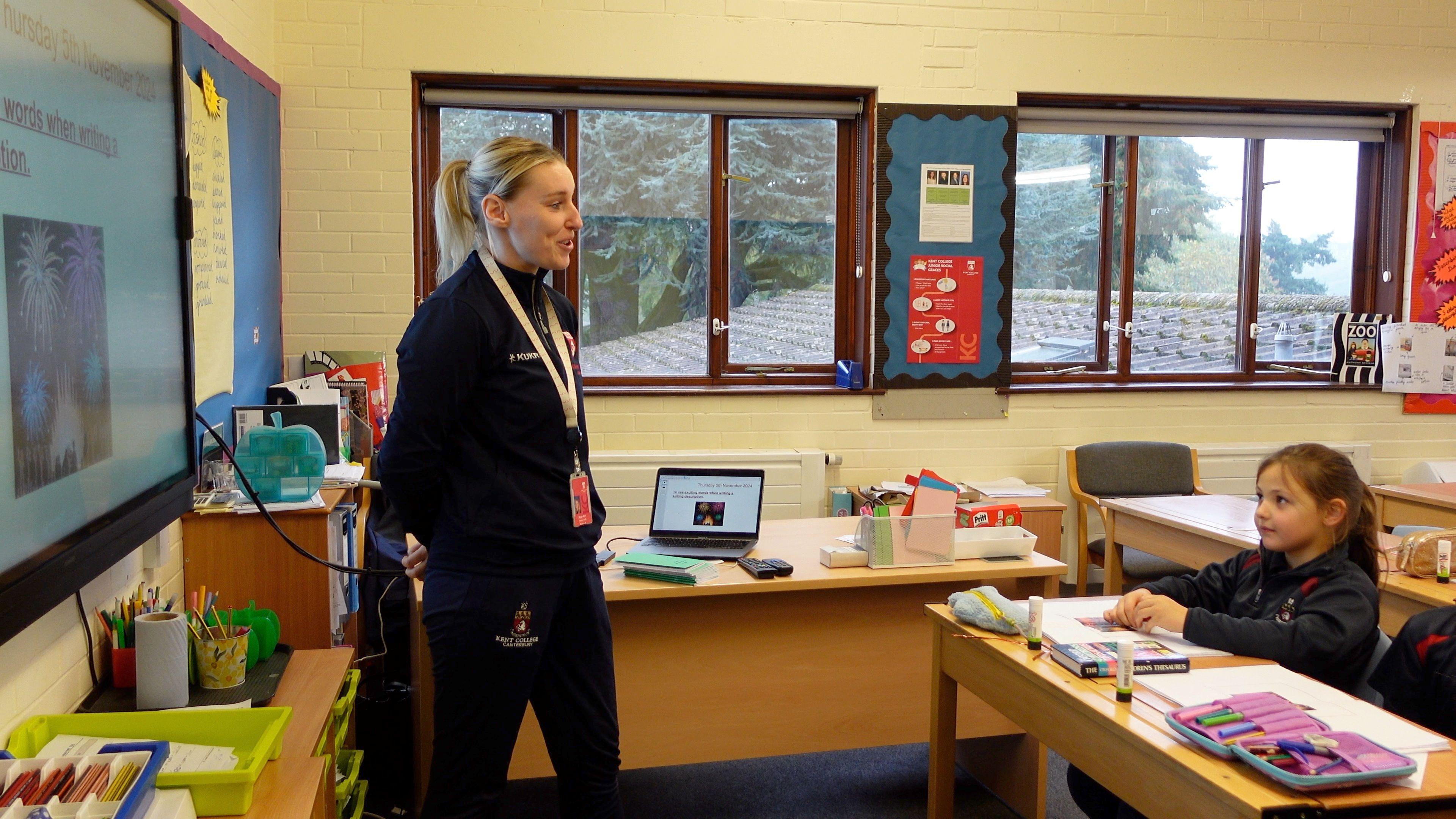
Megan Belt is also a teacher at nearby Kent College, and most Tier 2 players will need other jobs
"How we didn't get Tier 1 I don't quite understand," the 27-year-old told South East Today.
"It was hard to take when other counties got it and we didn't when we've produced so many England players and our pathway's so strong.
Former club chair Simon Philip described it as "difficult to swallow".
They have since formed a steering group that includes former Minister for Sport Dame Tracey Crouch to help them reach the top league.
"It is really tough and if I was a man playing for Kent I probably wouldn't be a teacher," Belt added.
"But women's sport and women's cricket is heading in the right direction, it's time to prove in Tier 2 that we should be in Tier 1 and that's what we're trying to do."
'We need to build a platform for Tier 1'
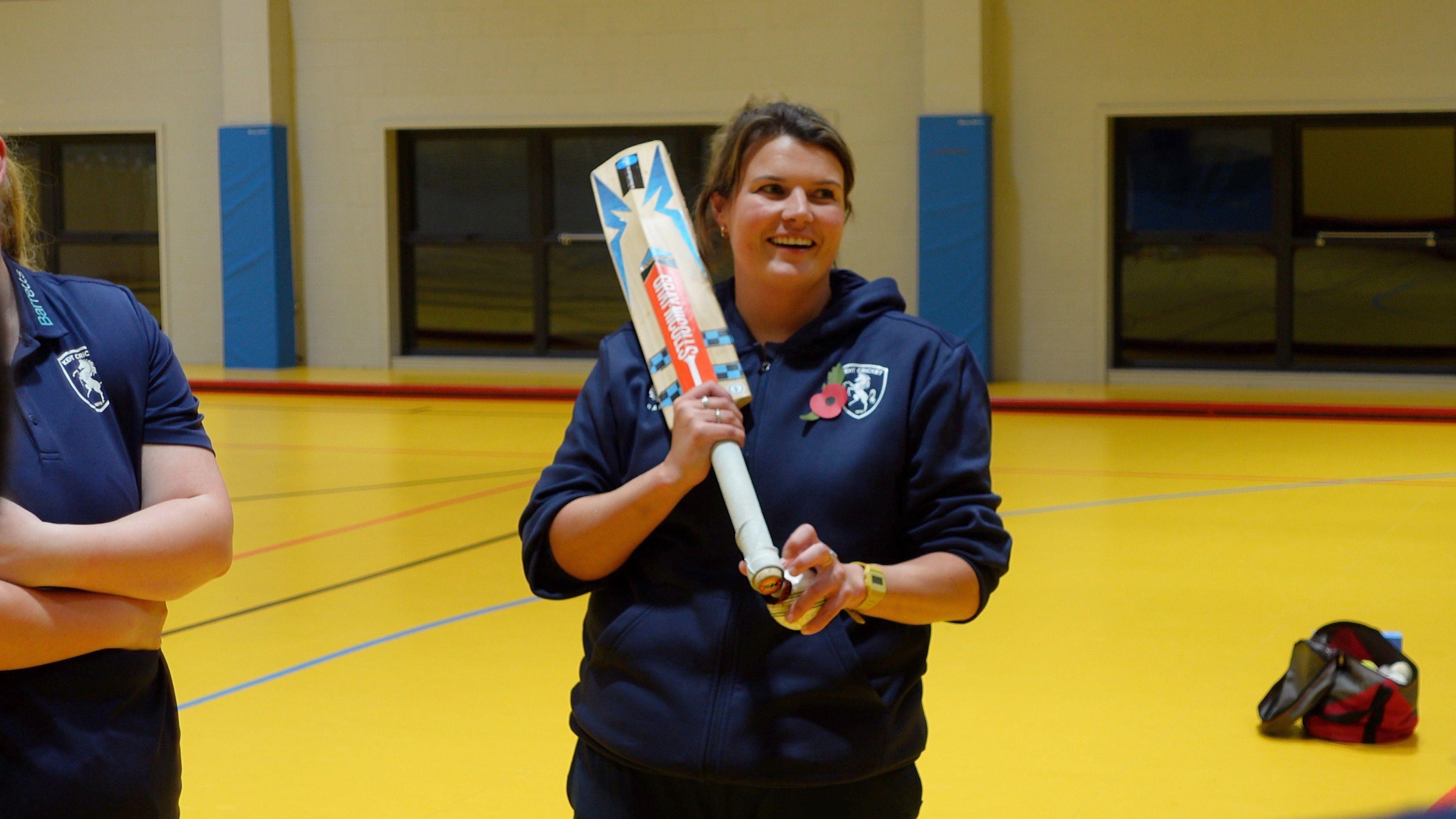
Lucy Arman is Kent's first ever head of women's cricket
Despite initial disappointment, the increased ECB investment and having Tier 1 to aim for in the future is allowing Kent to revitalise their women's team.
They've hired their first ever head of women's cricket in ex-player Lucy Arman, who arrived at the club with a sharp focus on the short-term.
"Being Tier 2 is the right thing for now and we have to build a resource and a platform for Tier 1 status," she said during a coaching a session in Canterbury.
"Resources mean that we can now employ coaches and can have further investment, for the first time, into strength and conditioning, physio, and analysis.
"It really creates a more professional environment for the women's team that they've never had before."
They also continue to work closely with the Surrey talent pathway and former Kent player Arman says they've accepted the developmental role they'll likely play in Tier 2.
"We will support any player to fulfil their professional dream and if that means they have to go to another county for their professional status then we will back that and help them along the way, and do everything we can so that when we do become professional, we can get them back in a Kent shirt," she said.
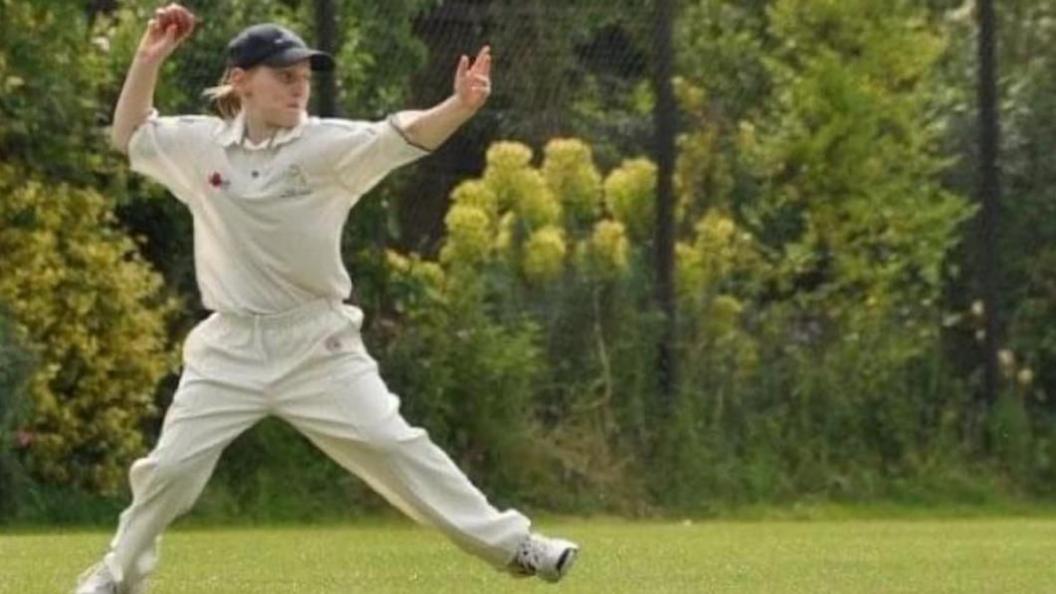
Megan Belt started playing for Kent Cricket when she was nine years old and is hoping that those in the academy now enter the sport with better prospects